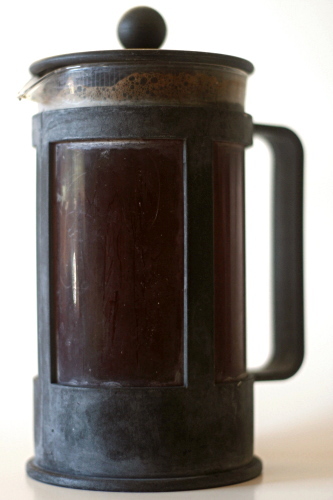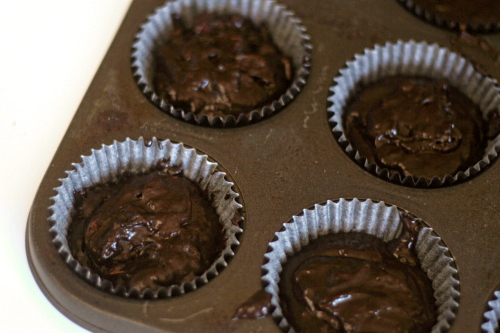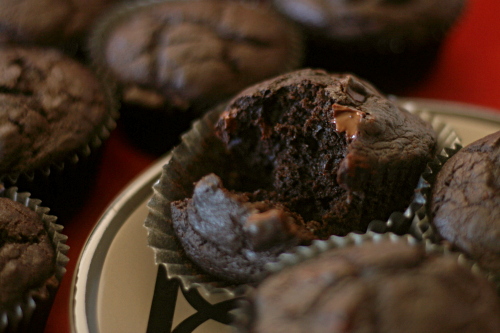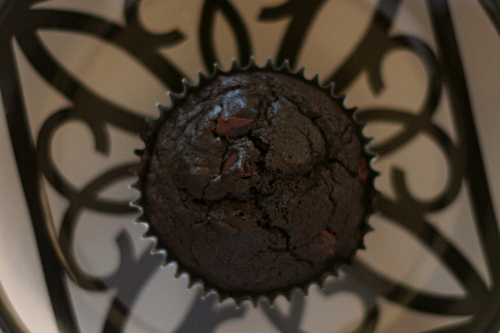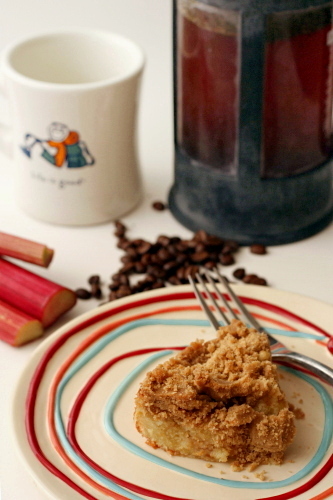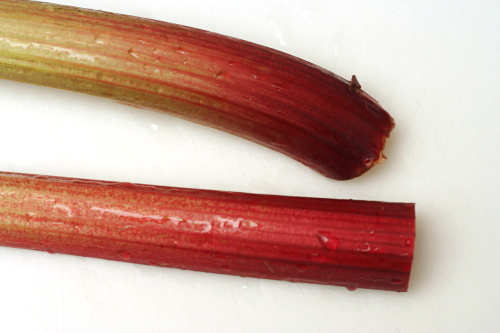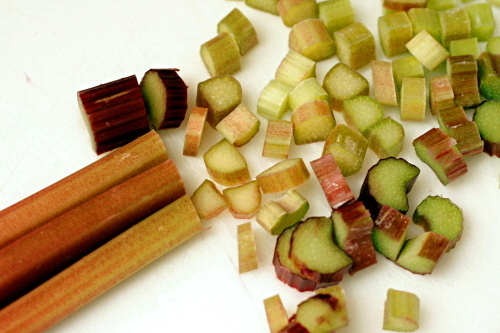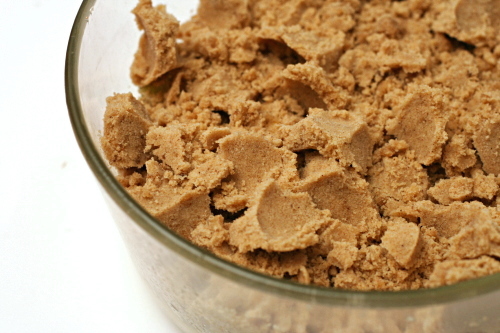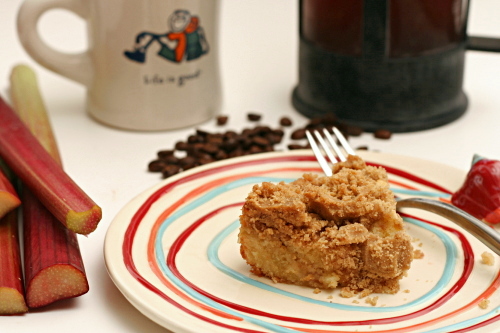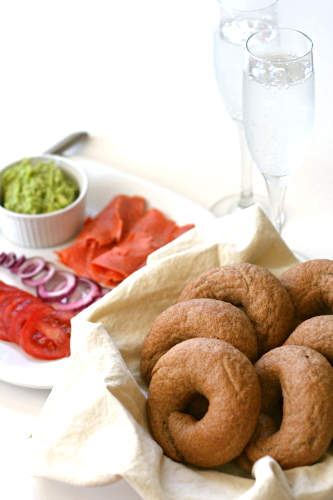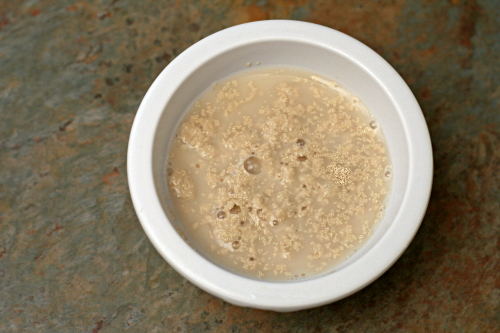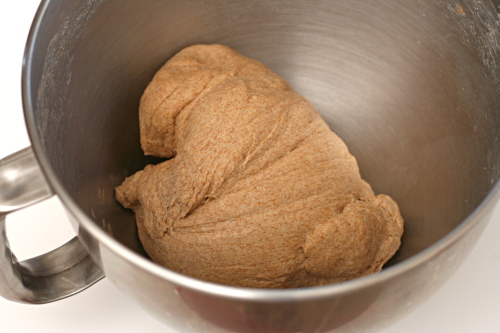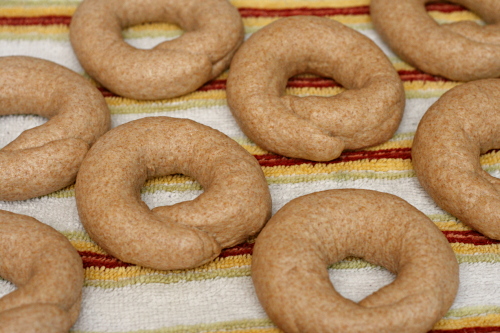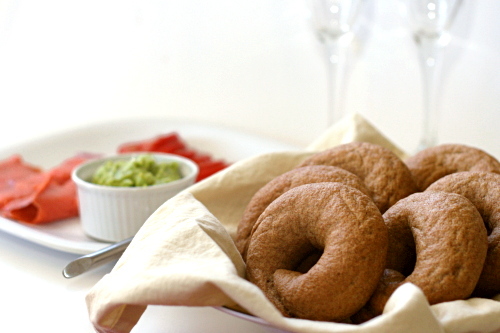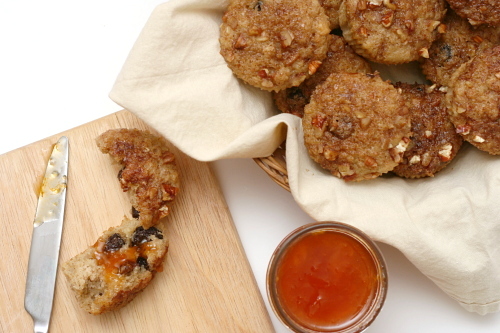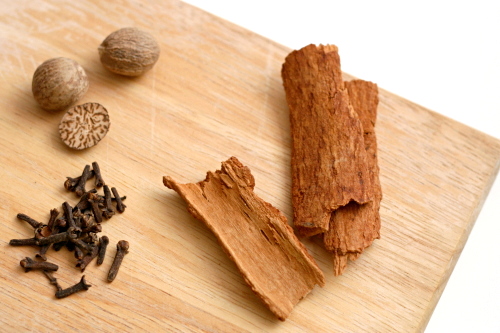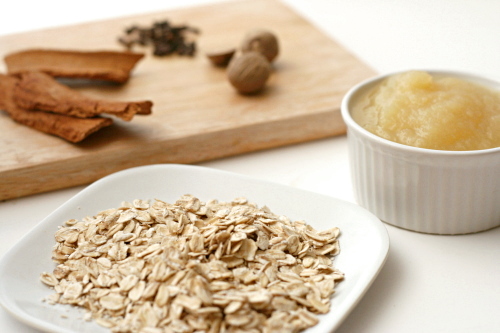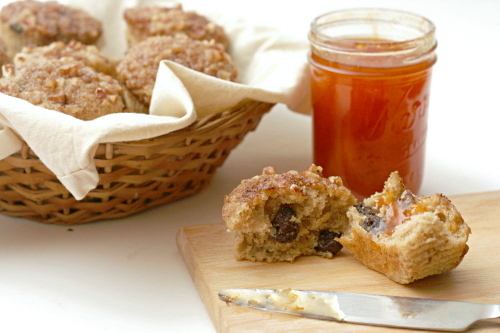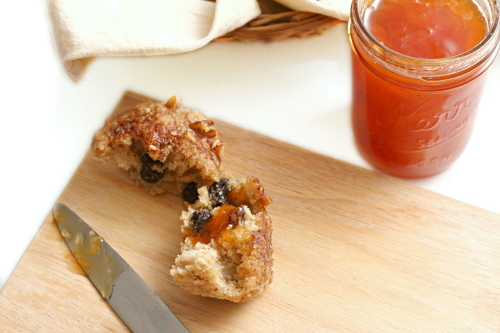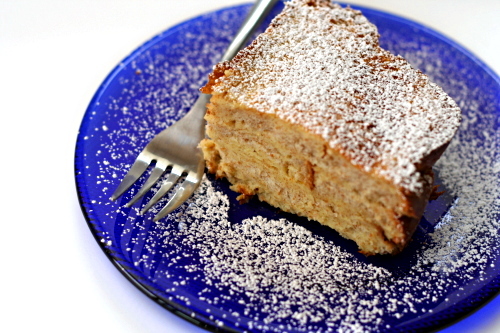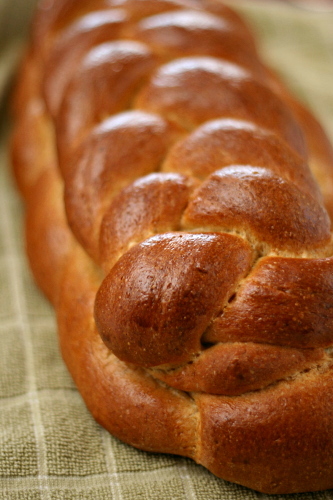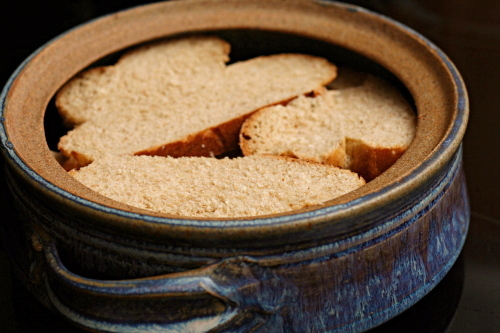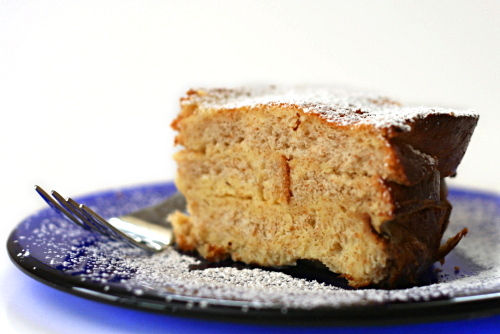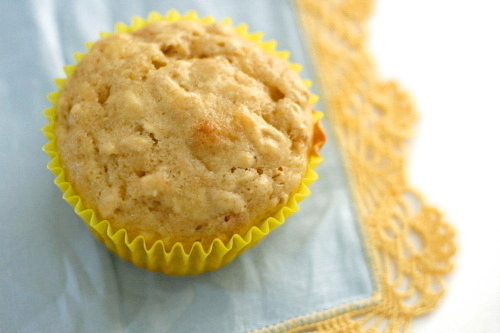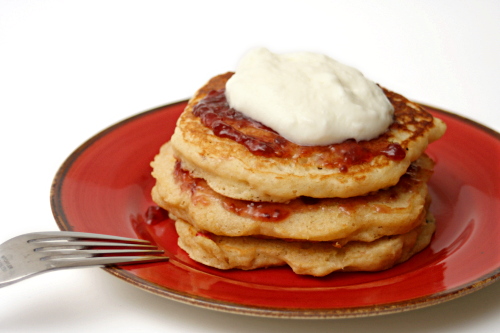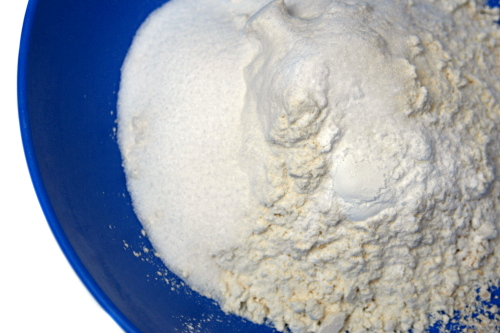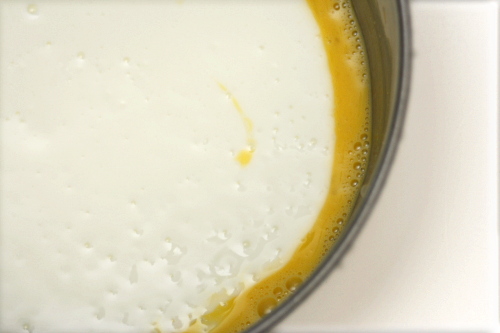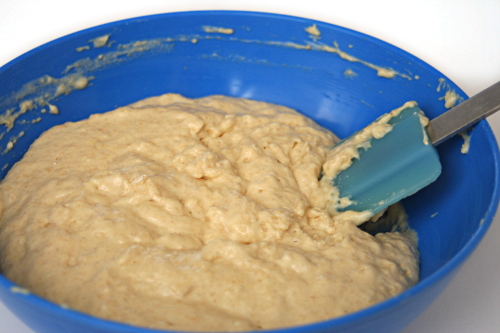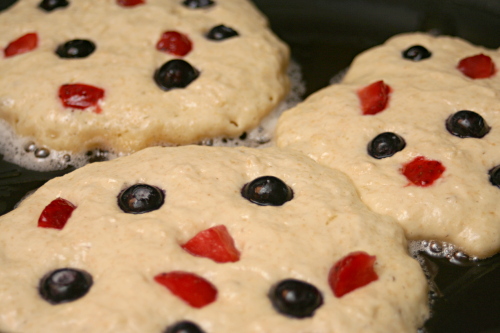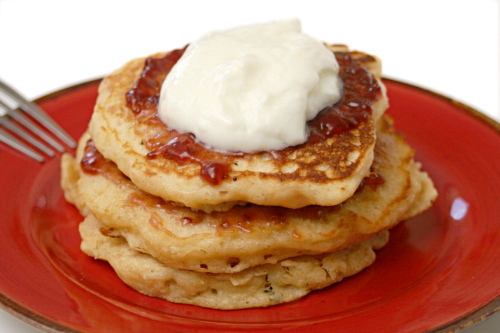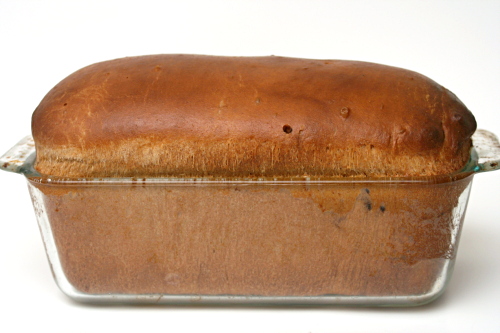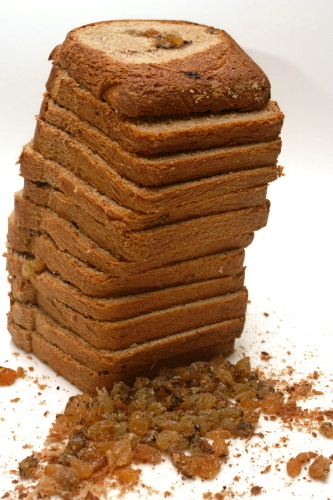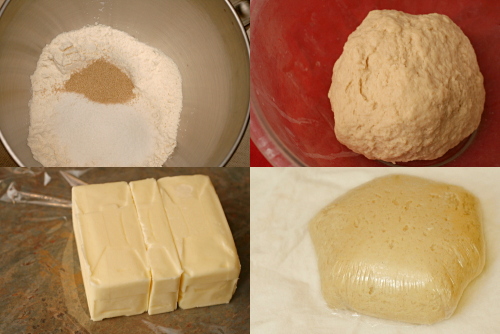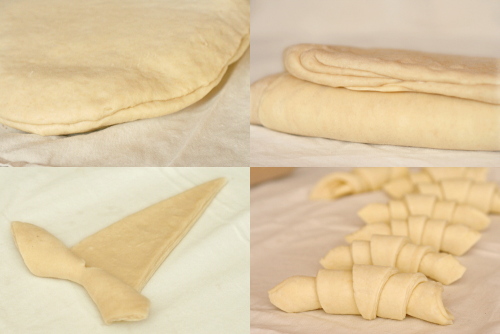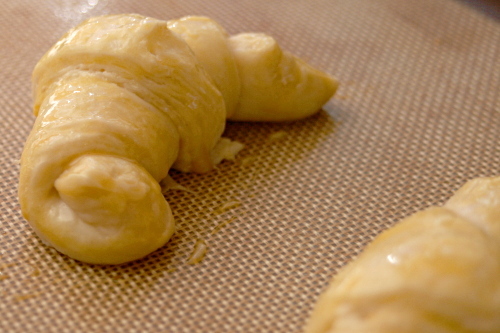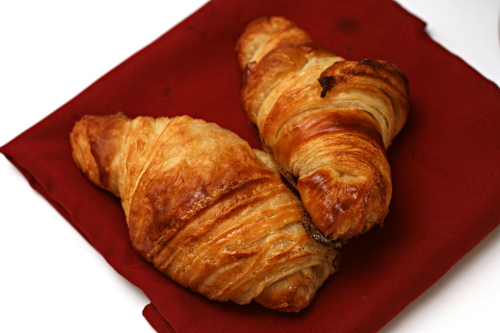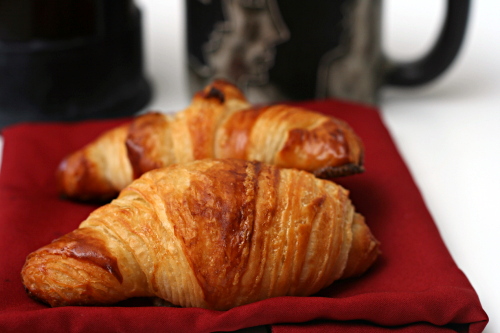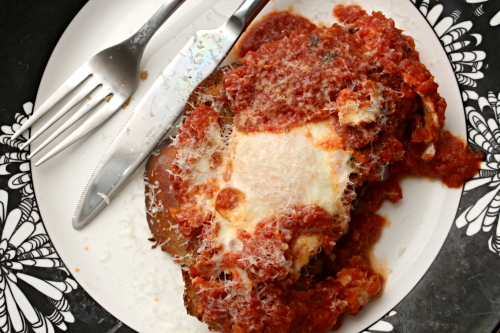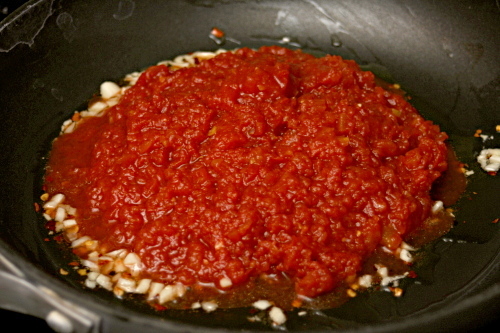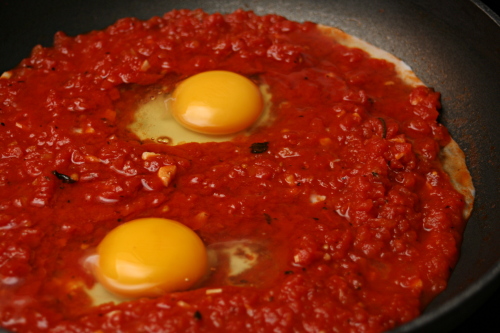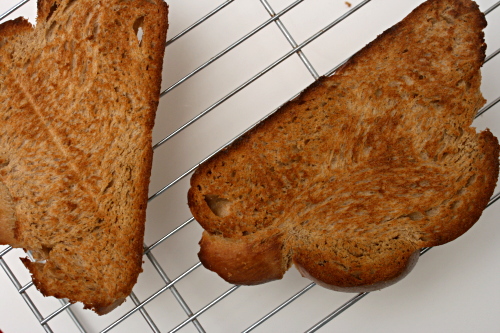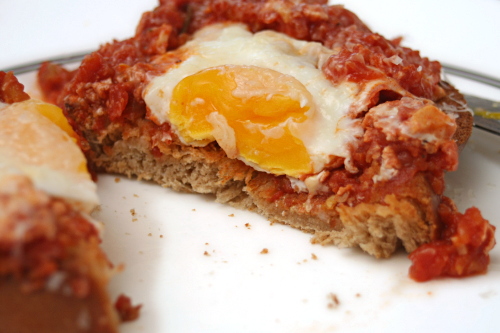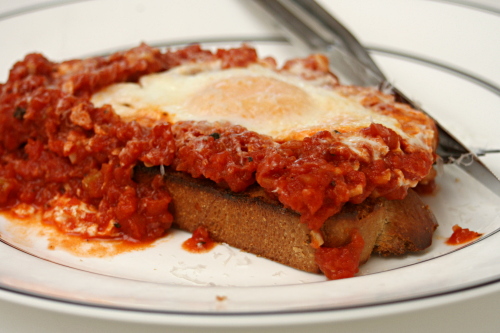I wasn’t in the mood for these the day I made them. What I was in the mood for was the Chocolate Chunk Muffins a couple pages later. If you’ve flipped through Dorie’s book, you must have seen the ones I’m talking about – dark, rich muffins studded with big chunks of bittersweet chocolate. They’re not breakfast, but I bet they’re delicious.
They are, however, not this week’s Tuesdays with Dorie recipe. This week’s recipe is espresso muffins. But I got to thinking about how coffee enhances the flavor of chocolate and wondered if the reverse were true. Could I add just a bit of chocolate to give these another flavor dimension?
I replaced a quarter of the flour with cocoa powder, and, to just a few of the muffins, stirred in some chopped semisweet chocolate. And I was surprised that these ended up tasting just how I’d imagined the double chocolate muffins I’d been craving in the first place. The espresso flavor was timid, hiding behind the dominant chocolate. More chocolate flavor isn’t going to get any arguments from me, but now I’m curious about how the non-chocolate, pure espresso version would be. Next time I’ll have to try harder to resist my urge to eat chocolate for breakfast.
Rhiani chose these muffins, and she has the recipe posted. I replaced ½ cup of the flour with cocoa and added a few chocolate chips.
One year ago: Flaky Apple Turnovers
Two years ago: Dimply Plum Cake

